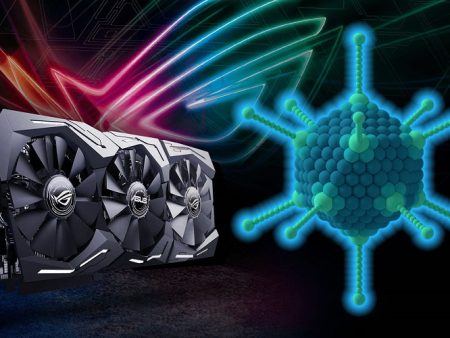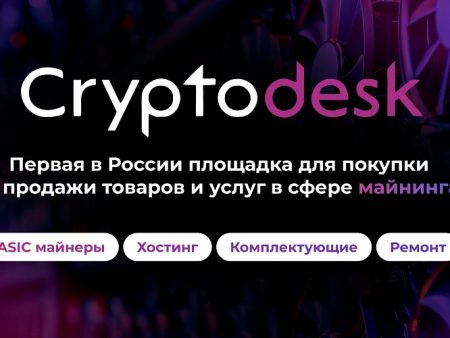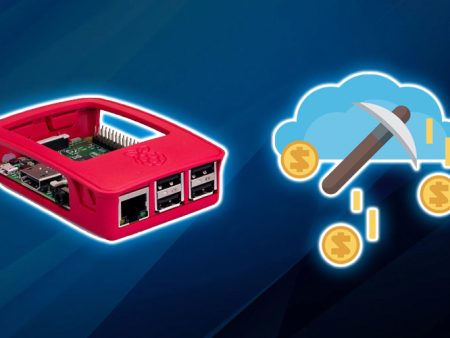Every cryptocurrency transaction must be verified by someone. To do this, a consensus algorithm is used – a way of reaching an agreement to add new data to the blockchain. Proof-of-Work and Proof-of-Stake are the most popular of these. They help coordinate the network and keep it secure. Each algorithm has its own advantages and disadvantages. In this article we will tell you how PoW and PoS work in mining.
What is Proof-of-Work (PoW)
In the realm of digital assets, there is no central authority or supervisor that monitors the actions of users and the correctness of transactions. The Proof-of-Work mechanism is necessary for cryptocurrency to work without the involvement of companies or the government.
The Proof-of-Work algorithm requires significant computational effort. The concept behind Proof-of-Work was proposed in 1993 by computer scientists Cynthia Dwork and Moni Naor. In 2008, Satoshi Nakamoto published a paper titled “Bitcoin: a peer-to-peer electronic monetary system.” In it, the creator of the flagship asset proposed to apply the Proof-of-Work method to the main cryptocurrency. Since then, PoW has become a key element of Bitcoin and blockchain technology.
The Proof-of-Work approach is an integral part of digital asset mining.
The PoW algorithm determines who can contribute new data to the register. Miners engage in a competitive race using high-powered equipment. They then perform complex mathematical calculations and add actual blocks to the network.
Principle of operation
Proof-of-Work is most commonly associated with bitcoin, but this mechanism also applies to other digital assets. The goal of miners is to create a hash that matches a mathematical function. Whoever finds the solution to the problem first receives a reward. The network then generates a new value that the miners must hash.
5020 $
bonus for new users!
ByBit provides convenient and safe conditions for cryptocurrency trading, offers low commissions, high level of liquidity and modern tools for market analysis. It supports spot and leveraged trading, and helps beginners and professional traders with an intuitive interface and tutorials.
Earn a 100 $ bonus
for new users!
The largest crypto exchange where you can quickly and safely start your journey in the world of cryptocurrencies. The platform offers hundreds of popular assets, low commissions and advanced tools for trading and investing. Easy registration, high speed of transactions and reliable protection of funds make Binance a great choice for traders of any level!
Users perform trillions of calculations per second. It takes them about 10 minutes on average to mine a coin.
Special equipment is required to participate in the mining process. Nodes (any device running cryptocurrency mining software) verify transactions, prevent double-spending (spending coins twice), and determine which blocks to bring into the chain.
It is impossible to spoof the inputs. If a node tries to put invalid solutions in there, other participants in the network will reject the changes. To illustrate this, a labor contract can be presented. The document contains the requirements and conditions of employment. If someone tries to change them, the hash string will be different and everyone in the network will know that the agreement is invalid.
Advantages
PoW is essentially a system for authenticating transactions without involving a third party. The algorithm presents a robust mechanism to achieve consensus and prevent tampering with the blockchain. It makes it difficult to change any part of the registry, thus ensuring that every transaction is authentic and traceable.
PoW also protects the network from attacks. These would require large amounts of computing power to execute. In theory, an unscrupulous mining participant could tamper with the blockchain, but the costs would far outweigh the potential benefits.
Disadvantages
Proof-of-work has notable disadvantages that have led to the emergence of alternative consensus algorithms. These include:
- Huge costs. Mining cryptocurrencies requires expensive equipment. Costs drive up energy bills.
- “Uselessness” of the computation. This is one of the differences between PoW and PoS in mining. Mining techniques do a lot of work to create blocks and consume a lot of energy. However, these calculations are not applicable in other areas.
- Centralization. In February 2023, the Foundry USA mining pool controls 31.8% of Bitcoin’s hashrate. If that figure reaches 51%, miners could collude and launch an attack. This would lead to complete centralization.
What is Proof-of-Stake (PoS)
For a few years, PoW was the only consensus algorithm. However, it has developed problems. As Bitcoin mining became more popular every year, the complexity of the network was constantly increasing. Users could no longer mine assets using CPUs or GPUs. This forced participants to buy powerful hardware (ASIC). Such equipment consumes a lot of electricity and harms the environment. In addition, some groups of miners began to make up a large percentage of the network hashrate. Then new mechanisms, such as Proof-of-Stake, appeared.
PoS is a Proof-of-Stake algorithm used in the blockchain to process and verify transactions. Unlike Proof-of-Work (PoW), where participants need special hardware, Proof-of-Stake uses less energy. The system involves investing your own money. This is the main difference between PoW and PoS in mining.
Principle of operation
In the Proof-of-Stake protocol, you do not need to calculate complex mathematical equations. It is enough to have a certain amount of digital coins on your account.
Validators play the main role in PoS mining. They put the coins in the staking and deal with validating transactions. The system randomly selects a node that will add a new block. It’s like a lottery – the more blocked tokens, the higher the probability of becoming a validator. For example, the Ethereum network requires a minimum deposit of 32 ETH (about $52k).
Under Proof-of-Stake consensus, users can link their tokens to a specific validator. It should be noted that assets are not transferred to another wallet.
The locked cryptocurrency can be considered as a security deposit. The selected participant who authenticates a fraudulent transaction on the blockchain will be fined.
Benefits
Proof-of-Stake aims to address the shortcomings of PoW. The PoS algorithm is much more energy efficient. There is no mining process involved here, which requires significant resources.
Another plus point is that it reduces the risk of 51% attack, in which a certain group of individuals can control a large portion of hashing to use it for personal gain. This is difficult to accomplish because the attacker can lose the locked tokens. In large networks such as Ethereum, he would have to spend several million dollars. In comparison, in PoW mining, users will not lose their hardware if they conduct a 51% attack.
Other advantages of the Proof-of-Stake consensus mechanism:
- Users who place tokens into staking receive coins as a reward for their contribution.
- PoS is greener than PoW.
- Proof-of-Stake blockchains are more scalable. The network is decentralized and allows more individuals and groups to participate.
Disadvantages
Proof-of-Stake is seen as a fair and equitable mining system. However, this algorithm has disadvantages:
- PoS cryptocurrencies tend to have an unlimited maximum supply. This contributes to inflation.
- High risk of 51% attack in small networks.
- Whales can send a lot of digital coins into staking. Such large holders are able to influence votes and determine the future development of the network.
- Since Proof-of-Stake is a relatively new algorithm, its security is not fully proven. Proof-of-Work provides a more reliable consensus mechanism.
The main differences between PoW and PoS mining
The algorithms use different methods to achieve consensus. There are other differences between PoW and PoS mining. See the table for more details.
| Proof-of-Work | Proof-of-Stake |
|---|---|
Frequently Asked Questions
⚡ Why can’t ETH be mined?
Ethereum switched to Proof-of-Stake in September 2022. Users switched to other assets.
🔔 What is the minimum amount for steaking in a pool?
It depends on the digital coin. For example, for Litecoin steaking, the Binance exchange suggests adding a minimum of 0.001 LTC, for Ethereum – 0.0001 ETH.
✨ How many Bitcoins do miners get for adding a block?
In 2023, mining participants earn 6.25 BTC. In 2024, the number of rewards will be halved to 3.125 BTC. When Bitcoin was first launched, miners received 50 coins per block.
📢 Which exchanges have steaking pools?
You can find them on Binance, Coinsbit, MEXC and other trading platforms.
📌 How to become an Ethereum validator?
You need to make a minimum deposit of 32 ETH into an official Ethereum Foundation contract. Then download the ETH2.0 software and run it. The system will randomly select a validator to validate blocks on the blockchain.
Is there an error in the text? Highlight it with your mouse and press Ctrl + Enter
Author: Saifedean Ammous, an expert in cryptocurrency economics.














